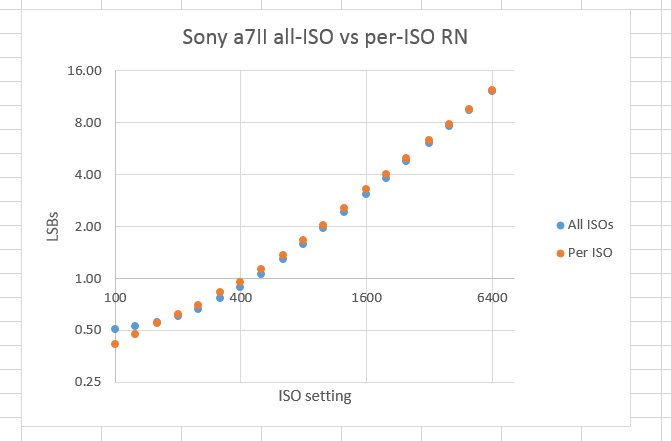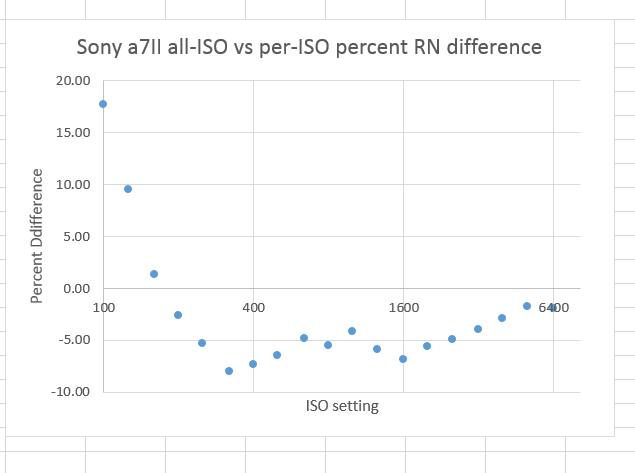Yesterday, I reported on modeling the a7II at each ISO. Earlier, I modeled the camera over the same ISO range. The difference is that the first method yields a series of read noise numbers, one for each raw channel at each ISO, while the second method produces two read noise numbers for each channel, which can then be combined to give the read noise at each ISO.
I thought it would be instructive to see how the results from the two approaches compared.
Here’s a graph that converts everything to 12-bit raw values and averages all four channels. If you think the a7II is a 14-bit camera, multiply the vertical axis numbers by 4:
You can see that the curves are in substantial agreement except at the lowest ISOs, where the per-ISO method produces lower read noise than the all-ISO method.
This becomes even more obvious if we look at the percentage difference between the two method’s read noise:
My conclusion is that there’s some trick that Sony is playing to get better read noise performance at low ISOs than the standard model would allow.
What that trick is remains a mystery to me. However, I’m not going to lose any sleep over the matter, since none of the differences are enough to affect normal photography.


Leave a Reply